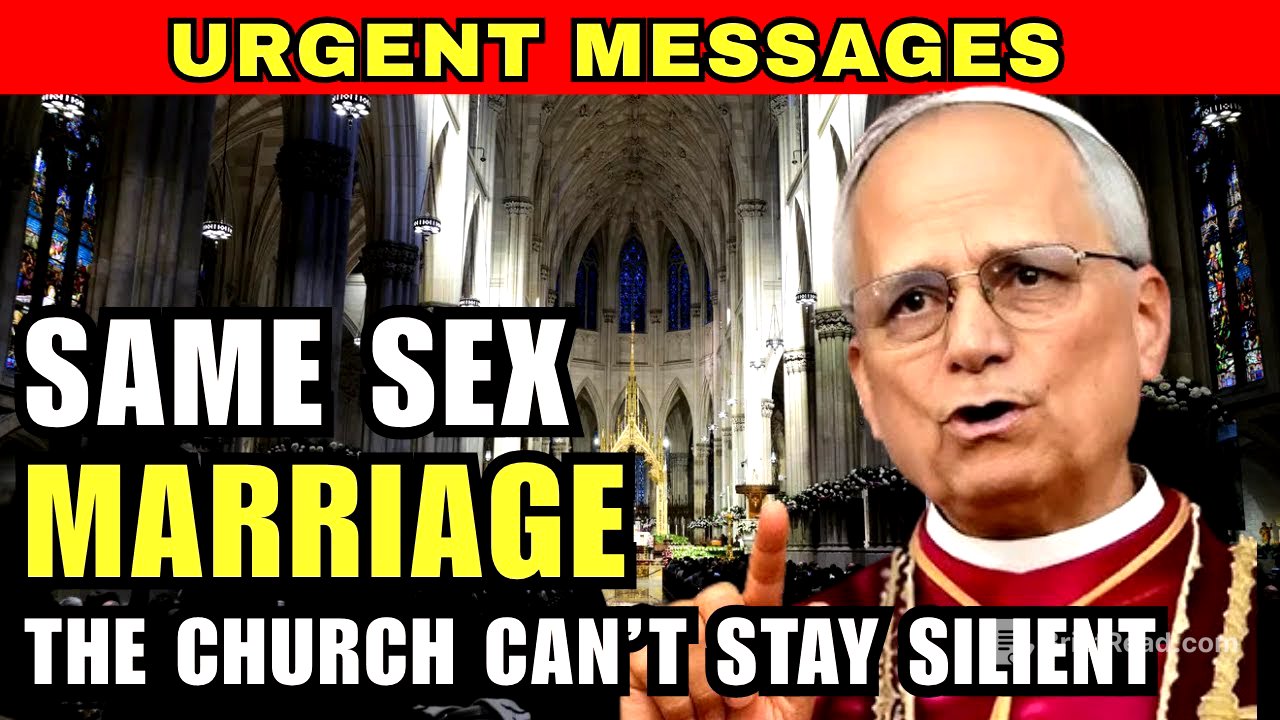TLDR;
Pope Leo XIV's radical move to address the divisive issue of same-sex relationships within the Catholic Church by issuing a global pastoral moratorium, urging silence and listening over condemnation. This decision has ignited a mix of reactions, from relief and hope to outrage and fear of betraying traditional doctrines, revealing a deep chasm within the Church. The Pope's symbolic actions, like kneeling in the Pauline Chapel, underscore a shift towards humility and love, challenging the Church to prioritize understanding and compassion.
- Pope Leo XIV orders global pastoral moratorium on same-sex relationships.
- The Pope emphasizes listening and accompaniment over condemnation.
- The decision sparks division within the Church, with contrasting reactions from different factions.
Pope's Letter: A Call for Silence [0:00]
Pope Leo XIV issued a private letter titled "Silentium Cortis," or "the silence of the heart," to every Catholic bishop, calling for a global pastoral moratorium on the discussion of same-sex relationships. This letter commands priests, bishops, and cardinals to cease preaching, writing pastoral letters, and making the issue a centerpiece of culture wars. Instead, they are instructed to practice "radical accompaniment," walking with individuals without judgment and trusting in the Holy Spirit to guide them. The Pope's letter emphasizes listening and shared humanity over arguments, urging the church to welcome rather than condemn.
The Message: Love Over Doctrine [1:45]
The letter contains powerful statements, such as "The pulpit is not a throne of judgment, but the table from which the bread of life is offered" and "Let us be known not by what we are against, but by who we are for." Pope Leo asserts that the church has prioritized speaking and defending doctrines over listening, failing to love those it has not understood. This shift aims to move the church from being a fortress to a "field hospital," focusing on healing and compassion. The Pope believes that before teaching, one must listen, and before healing, one must acknowledge the pain of others.
Symbolism: Kneeling in Darkness [3:49]
The symbolism surrounding the letter's release is significant. Instead of an official photograph, a leaked image shows Pope Leo kneeling on the cold marble floor of the Pauline Chapel in the Vatican before an unlit candle. This private, sacred space, adorned with Michelangelo's art, highlights the Pope's solitary figure in profound darkness. The unlit candle symbolizes a conversation yet to begin, waiting for a change of heart rather than a decree. The Pope's act of kneeling in silence underscores the importance of humility and contemplation.
Reactions: Division and Discord [5:43]
The Pope's letter has caused immediate and massive fallout, creating tension within the Vatican. Conservative figures like Cardinal Alistister Reed view the moratorium as a surrender and a betrayal of traditional teachings, planning a formal accusation of heresy against the Pope. Conversely, figures like Cardinal Klaus Richter see it as a sign of hope and a necessary step towards regaining trust. Catholics worldwide are divided, with some expressing relief and gratitude, while others feel abandoned and believe the church is losing its soul.
Global Impact: A Divided Church [7:43]
The impact extends to Catholics around the world, highlighting the deep divisions within the Church. For every individual who feels seen and accepted, there is another who feels abandoned and unheard. Even within the African church, while respecting the Pope's call for reflection, there is concern that the silence may be misinterpreted as a change in unchangeable doctrine. The Pope's action has revealed a chasm running through the global Catholic faith, rather than creating peace.
Broader Implications: A Lesson for Humanity [11:03]
This situation matters beyond the Catholic Church, influencing laws, cultures, and how billions understand family, identity, and love. It also sets a precedent for other faiths regarding the possibility of change versus adherence to tradition. More broadly, it presents a universal challenge: when to speak and when to be silent, when to draw lines and when to build bridges. Pope Leo's letter offers a difficult path of silence, listening, and humility, betting on the idea that true transformation occurs in shared human encounters and that God's grace works best when hearts are open. The question remains whether this silence will be empty or pregnant with potential.

![धरती के नीचे से मिलेगी सस्ती बिजली [Could hot water be the key to energy needs in Europe?]](https://wm-img.halpindev.com/p-briefread_c-10_b-10/urlb/aHR0cDovL2ltZy55b3V0dWJlLmNvbS92aS9wOHhKYTVlMTZoby9ocWRlZmF1bHQuanBn.jpg)







